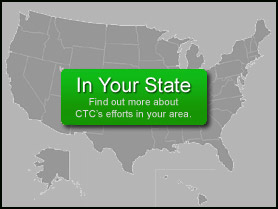As might be expected from a back-room deal negotiated with the aid of hundreds of corporate advisors, while the public and press were shut out, the proposed Trans-Pacific Partnership (TPP) not only continues the awful legacy of past trade agreements that put corporate profits ahead of jobs and wages, the environment and public health — in a number of important ways, the TPP is actually far worse than past agreements. Here are five key examples.
.
1.) Worse-than-NAFTA “Rules of Origin” That Threaten U.S. Jobs: The TPP is so poorly negotiated that it allows products assembled from parts made primarily in third-party countries to enter into the United States duty-free — a major rollback from even the North American Free Trade Agreement (NAFTA). In this manner, goods made in China and other countries with no TPP obligations what-so-ever, be it on weak labor standards or reciprocal market access, have a back-door mechanism to enter the United States, undercutting U.S. employers. This provision affects everything from food products to automobiles to solar panels, with even the Wall Street Journal suggesting that the TPP is likely to destroy hundreds of thousands of American manufacturing jobs.
.
2.) A Roll Back of Bush-Era Environmental Obligations: The TPP’s environment chapter rolls back countries’ obligations to “adopt, maintain and implement” important multilateral environmental agreements (MEAs) in comparison to those included in all previous U.S. trade agreements since the George W. Bush administration. Bush-era trade deals included seven key MEAs. The TPP includes only one, allowing countries to violate their environmental obligations in order to boost trade and investment without consequences.
.
3.) New Tools for Banks to Challenge Financial Reforms: For the first time in a U.S. trade agreement, the TPP includes a “minimum standard of treatment” obligation in its financial services chapter, enabling banks, insurance companies, hedge funds and others to use the pact’s controversial investor-state dispute settlement (ISDS) system to attack financial regulations as violating their “expectations” of how they should be treated under the agreement. Meanwhile, the supposed “safeguard” that U.S. negotiators claim would protect such policies replicates terms that have failed to protect challenged policies in the past.
.
4.) The “Evergreening” of Medicine Patents that Block Access to Medicine: Once again rolling back progress made during the George W. Bush administration, the TPP requires countries to allow additional 20-year patents for “new uses” of medicines that are already under patent — a process that “evergreens” pharmaceutical companies’ medicine patents well beyond the original two decades, while blocking competition from lower-cost, life-saving generics. Unlike past deals that recognized the need for flexibility in poorer nations, the TPP’s extreme medicine patent rules apply to developing countries.
.
5.) A “Docking” Procedure to Make the Massive Pact Even Bigger: Among its current twelve countries, the TPP would already establish rules governing approximately 40% of the global economy, making it the biggest free trade agreement (FTA) in history. Unlike past U.S. FTAs, however, the TPP also includes a “docking” mechanism that would allow any other countries to join over time. A wide number, from the Philippines to China, have expressed some interest in doing so.
.
The TPP threatens to offshore U.S. jobs and drive down wages, harm the environment, undermine financial reforms, increase healthcare costs and more. Enough is enough. Click here to urge Congress to vote against the TPP.




